
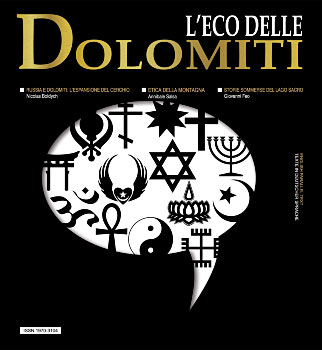
SUB-TROPICAL OLYMPIC GAMES
Nicolas Boldych

Widening of the circle
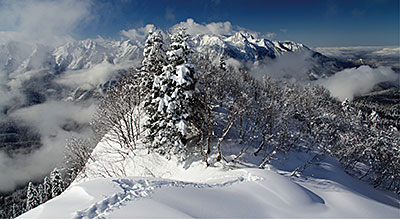
Ever since the inception of the Olympic Winter Games in the 1920s the natural sites of the White Olympia have been those of western fantasy - the Alps, discovered by the English tourism of the 19th-century (the first ever Games were staged in Chamonix, a station created by the English nobility), Scandinavia (Sweden and Norway) and North America. With the winter of this collective imagination being to the “north”, the Olympic Games had to be staged in the upper latitudes of Western Europe and the American continent. Japan, a paradoxical west bordering with Asia, represents the only exception to the rule, having hosted the Games no fewer than twice.
But it appears as though something is changing because in 2014, for the first time ever, the Olympics will travel outside of their comfort zone i.e. the triangle made up of the Alps, Scandinavia and America – to a Eurasian venue. The next Korean Games in Pyeonchang seem to confirm a “centrifugal” trend that, if it continues, will see the event move more freely around world, from north to south and east to west. There are in fact many countries where the climate and the territory would make it possible to stage the Winter Olympics.
The credit for having brought about a widening of the “circle” that will allow us to rethink our own geography, will in any case go to Russia.
The Caucasus and the union of continents
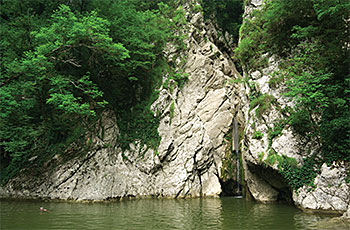
Sochi is situated at the extreme western tip of the Caucasus, on the banks of the Black Sea – the ancient Greek Hellespont – on the borders between Europe and Asia, in the “Krai” (“region” in Russian) of Krasnodar. Approximately 600km to the north is Kalmykia, where Mongolian is spoken, Buddhism is the religion and being to the south of the Caucasus, it drifts towards the Caspian Sea and Iran. The region of Krasnodar – which includes the Krai of Sochi and its 400,000 inhabitants – has since ancient times been the point of contact between the peoples of the Steppes (Shiites, Cimmerians, Alans) and those of the Mediterranean (Greeks, Rumanians, Venetians and Genoese), Slavs and Caucasians, Turks and Iranians. In Sochi, in addition to the Russian population there are also Adygeans, Georgians, Armenians and Greeks whilst to the north there is an Estonian community (Eesti-Sadok) that settled there in the 9th-century. The Caucasus on its own symbolises therefore the meeting of continents, echoing the meaning of the Olympic flag's five rings.
A Nice on the Black Sea
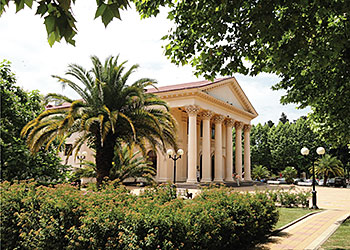
Russia does not only have the high peaks of the Caucasus or the Altai mountains on the borders with the Chinese world, but it also has a south, the final tip of which is the great triangle of steppes and mountains bordered by the Greater Caucasus, the Black Sea and Caspian Sea to the west and east and the Don and the Volga to the north.
Sochi is located to the south of this south that stretches for 140km between the rising mountains of Greater Caucasus and the Black Sea. It consists of three long, parallel straight strips - the sea, the city and the mountains. In its capacity as the intermediate band, the park-city of Sochi contains – both in terms of its climate as well as the flora and fauna – the result of the exchanges between the sea and the mountain, the mildness and the humidity of the sea and the two winds that blow across it. One, the fhoen, is warm and dry whilst the other, the bora is glacial. Further north and fifty kilometres from Sochi, between the alpine meadows, peaks rise up as high as 2000 metres whilst further south the climate is predominantly humid and subtropical, typical of the western stretches of the Asiatic, European and American continents. Located at the same latitude as Nice, the overall image of Sochi is perhaps better understood if it is called by a cliché, namely the Russian Nice.
In many ways the coast of the Black Sea does actually resemble that of the Ligurian Riviera, with subtropical vegetation, palm trees and agaves, cactuses, hibiscuses and oleanders, aristocratic houses often dating back to the 19th–century and long promenades. Sochi does in fact have a large park call precisely “Promenade”. The Ligurian Riviera and that of the Caucasus are regions in which the mountains meet the sea, leaving thin strips to the animated level in which the township stretches opposite the sea that controls the level of the city. Magnetised by the maritime horizon, the cities form an uninterrupted horizontal band over great distances.
Invitation to nature
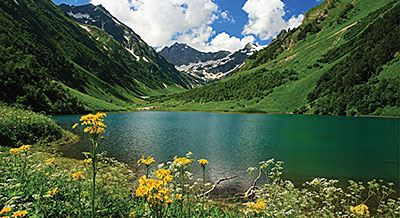
As opposed to Nice, Monaco and Genoa, Sochi however is a polycentric city, with very wide expanses that allow vegetation to penetrate into the parks of the care home (like the Sochi-Mazesta) or along the promenades, like in the Riviera Park. The French or Italian style gardens are also very beautiful and the Chinese Dendrarium, where the bamboos stand alongside different varieties of oak-tree (more than eighty species), pine trees, blackthorns, cypresses of the Caucasus, in the midst of which the Chilean butterflies have acclimatised perfectly. Nature has always invited itself into this city, but has been helped along the way by knowledgeable scientists who, for more than a century, have recognised and encouraged the exceptional characteristics of that ecosystem., These include the biologist, Christophore Chapochnikov who, to the north of Sochi, created the large natural and biosphere reserves of the Caucasus, proclaimed a UNESCO heritage site in 2008 and named in his honour, the Chapochnikov Reserve. It comes as no surprise, therefore, that even nature has been invited to take part in these games in the shape of programmes for protecting the environment, which includes the creation of a training centre for environmentalists within Sochi’s Dendrarium. But the efforts in this field will also bring the area in which the skiing competitions are to be held and which is around 60km from Sochi, into the Chapochnikov Reserve and the region of Krasnaya Polyana.
These efforts require a respect for the laws on eco-sustainability in bio-construction projects, the use of alternative energy sources and the obvious restrictions on carbon emissions. There is also a plan to reward those businesses that respect these laws by complying with the regulations in force.
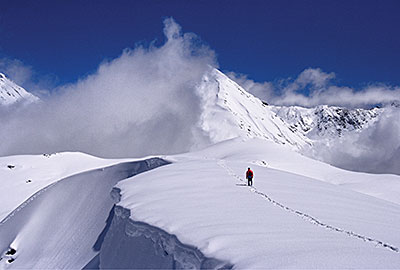
The Chapochnikov Reserve is an eco-system that is rich in animal species that over the course of time have become symbolic of the Reserve, namely deer, brown bears, northern bobcats, Caucasus goats and bison. The western part of the Reserve contains holly bushes, box woods of the Caucasus, yew trees, and different species of liane, rhododendrons and orchids.
The alpine and sub-alpine zones are covered woods of chestnut trees, beech, and birch, Georgian oak and Cappadocian sycamore. Further north there are forests of conifers (including the Norman Spruce) with a large variety of ferns. At the last level there is a stunning Krummholz landscape, with tree trunks and branches that have been literally been sculpted by the terrible fhoen wind.
This is a part of the eco-system that the Games will allow us to get closer to, or at least to gaze upon, probably helping to expand our European horizons, thanks to a spectacle of nature that is at the same time both familiar and exotic.